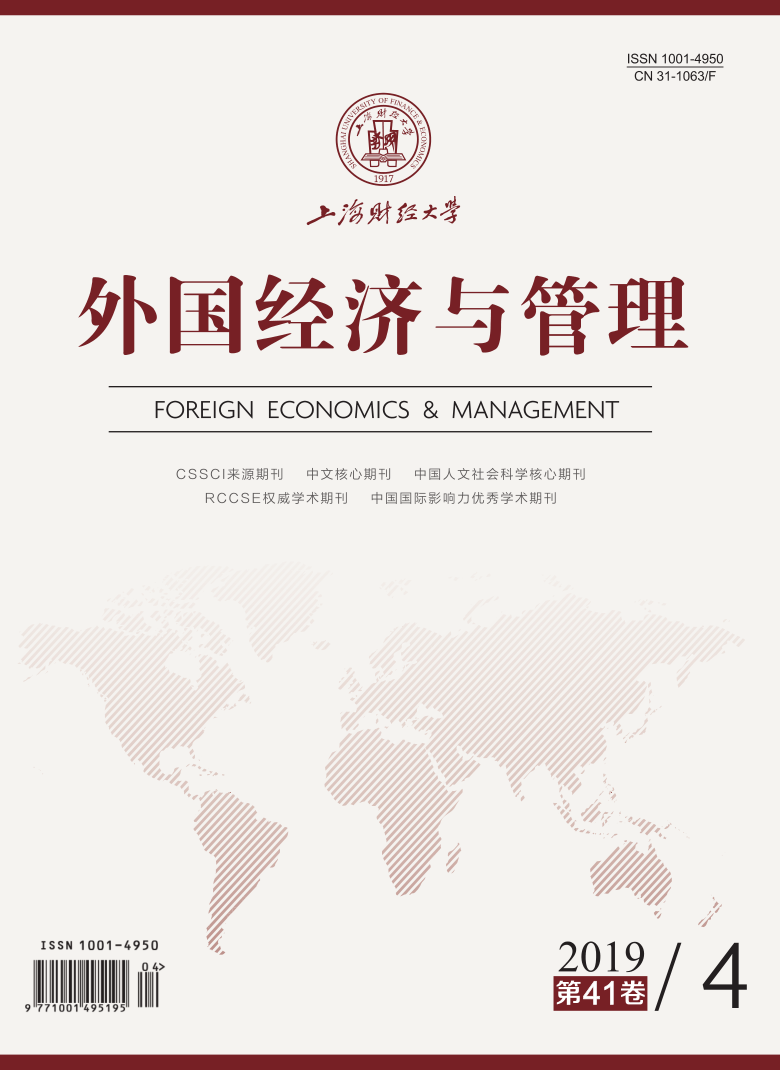Under the background of large-scale " going out” of Chinese enterprises, can cross-border M&As become an effective tool for Chinese enterprises to establish competitive advantages? Are cross-border M&As an international " spring-board” for Chinese enterprises? This study starts with analyzing the impact of cross-border M&As on the two types of FSAs, and tests whether cross-border M&As can constitute a " spring-board” for the internationalization of Chinese enterprises.This study takes BVD (Zephyr) global M&A transaction analysis database as the data source, uses the panel stochastic frontier model (SFA) and Malmquist decomposition method to subdivide the enterprise competitive advantage into LB-FSAs and NLB-FSAs, and in turn, analyzes the impact of cross-border M&A on the two types of firms’ FSAs. This study further discusses the mechanism of internationalization experience, enterprise ownership and holding mode on the relationship between cross-border M&As and corporate competitive advantages. The empirical analysis shows that: (1) Cross-border M&As significantly increase the LB-FSAs of enterprises, but the effect on NLB-FSAs is not significant; (2) Cross-border M&As have a continuous driving effect on LB-FSAs, but the effect is gradually weakening; (3) Cross-border M&As promote fixed assets investment, enterprise scale and marketing expenditure, but they have a crowding-out effect on R&D investment and inhibit the promotion of NLB-FSAs; (4) A deeper look into firm heterogeneity and holding mode shows that non-state-owned enterprises with rich international experience that adopt an incomplete holding mode are more effective in using M&As to enhance their competitive advantages.The contributions of this study include: Firstly, we distinguish and quantify LB-FSAs and NLB-FSAs, and establish a mechanism framework for how cross-border M&As enhance enterprises’ competitive advantages. Secondly, we empirically analyze the effect and influence mechanism of cross-border M&As on the two types of competitive advantages, test the theory of " spring-board”, and provide empirical evidence. Thirdly, we combine the PSM and DID approaches to ensure more precise research conclusions. Finally, we analyze the adjustment mechanism of three important factors: internationalisation experience, enterprise ownership and holding mode. The limitations of this paper are as follows: the sample mainly comes from ICT industry and does not consider the resource characteristics of target companies. Future research can carry out more detailed classification for different industry heterogeneity, or use case study methods to analyze the impact of resource complementarity or synergy on competitive advantages.
 / Journals / Foreign Economics & Management
/ Journals / Foreign Economics & ManagementForeign Economics & Management
JIN Yuying, Editor-in-Chief
ZhengChunrong, Vice Executive Editor-in-Chief
YinHuifang HeXiaogang LiuJianguo, Vice Editor-in-Chief
Do Cross-border M&As Increase Chinese Enterprises’ Competitive Advantages? A Test Based on the Specific Advantages of Regional and Non-regional Enterprises
Foreign Economics & Management Vol. 41, Issue 04, pp. 139 - 152 (2019) DOI:10.16538/j.cnki.fem.2019.04.011
Summary
References
Summary
[1] Fan Ziying, Tian Binbin. Tax Competition, Tax Enforcement and Tax Avoidance[J]. Economic Research,2013, (9):99-111.
[2] Huang Manli, Zhang Huiru, Liu Shuo. Merger and Acquisition Experiences and Ownership Decisions of Cross-Border Merger and Acquisition in Chinese Firms[J]. Journal of Management, 2017, (8):1134-1142.
[3] Jiang Guanghong. Cross-border Merger and Acquisitions of Chinese Firms is Failed or Not: Evidence from Effective of Industrial Firms[J]. Financial Research,2017, (4):46-60.
[4] Jiang Guanghong, Jiang Dianchun. Outward Direct Investment and Export[J]. Economic Research,2014, (5):160-173.
[5] Bertrand O, Capron L. Productivity enhancement at home via cross-border acquisitions: The roles of learning and contemporaneous domestic investments[J]. Strategic Management Journal, 2015, 36(5): 640-658.
[6] Bhaumik S K, Driffield N, Zhou Y. Country specific advantage, firm specific advantage and multinationality-sources of competitive advantage in emerging markets: Evidence from the electronics industry in China[J]. International Business Review, 2016, 25(1): 165-176.
[7] Birkinshaw J, Bresman H, Nobel R. Knowledge transfer in international acquisitions: A retrospective[J]. Journal of International Business Studies, 2010, 41(1): 21-26.
[8] Buckley P J, Casson M. The future of the multinational enterprise[M]. London: Macmillan, 1976.
[9] Li L J, Liu X M, Yuan D, et al. Does outward FDI generate higher productivity for emerging economy MNEs? —Micro-level evidence from Chinese manufacturing firms[J]. International Business Review, 2017, 26(5): 839-854.
[10] Luo Y D, Shenkar O, Nyaw M K. A dual parent perspective on control and performance in international joint ventures: Lessons from a developing economy[J]. Journal of International Business Studies, 2001, 32(1): 41-58.
[11] Luo Y D, Tung R L. International expansion of emerging market enterprises: A springboard perspective[J]. Journal of International Business Studies, 2007, 38(4): 481-498.
[12] Ramamurti R. What is really different about emerging market multinationals?[J]. Global Strategy Journal, 2012, 2(1): 41-47.
[13] Rugman A M, Nguyen Q T K, Wei Z Y. Chinese multinationals and public policy[J]. International Journal of Emerging Markets, 2014, 9(2): 205-215.
Cite this article
Chen Yan, Guo Wenbo. Do Cross-border M&As Increase Chinese Enterprises’ Competitive Advantages? A Test Based on the Specific Advantages of Regional and Non-regional Enterprises[J]. Foreign Economics & Management, 2019, 41(4): 139-152.
Export Citations as:
For
ISSUE COVER
RELATED ARTICLES





 6166
6166  10479
10479

